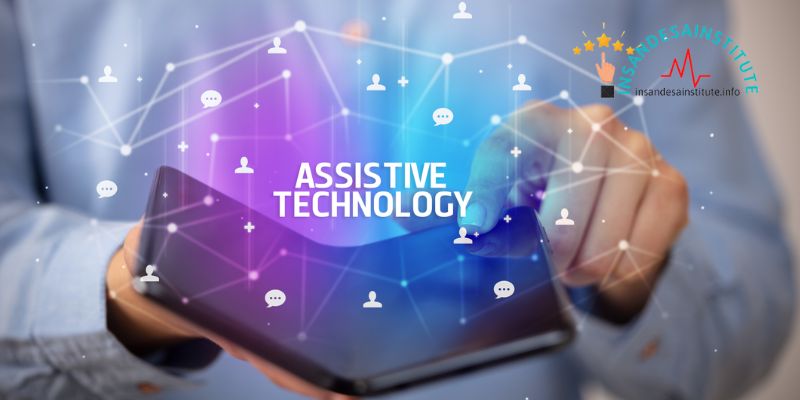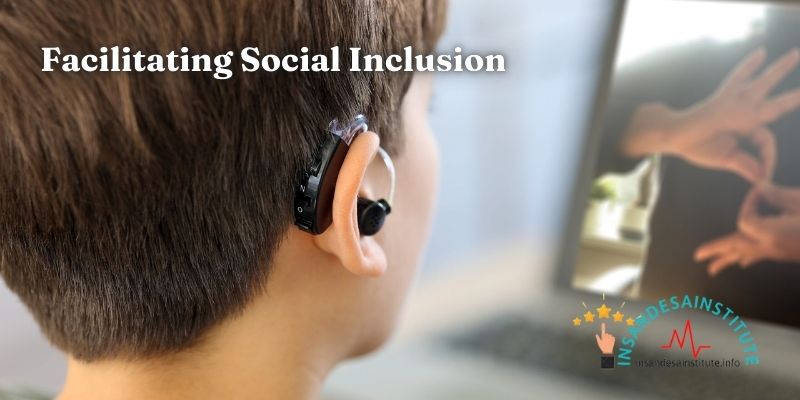In today’s rapidly evolving technological landscape, assistive technology has emerged as a transformative force, revolutionizing the lives of individuals with disabilities. These technological marvels provide a wide array of tools, devices, and software designed to empower people to overcome physical, sensory, or cognitive limitations. The benefits of assistive technology are numerous and far-reaching, with its impact extending across various aspects of life. In this article, Insandesainstitute.web.id will explore 11 key benefits of assistive technology, highlighting its pivotal role in fostering independence, inclusivity, and an improved quality of life.
11 Benefits of Assistive Technology
1. Enhanced Independence
The foremost among the benefits of assistive technology is the unparalleled boost it gives to individuals’ independence. It offers a helping hand where it is needed most, enabling people with disabilities to perform daily tasks and activities they might otherwise struggle with. From adaptive utensils for eating to mobility aids like wheelchairs and walkers, assistive technology empowers individuals to navigate the world on their own terms.
2. Empowering Communication
Assistive technology facilitates communication for those facing speech or language impairments, ushering in a new era of self-expression. Speech-generating devices and communication apps are prime examples. They allow individuals to convey their thoughts, emotions, and needs effectively, bridging the gap between them and the rest of the world. In this context, assistive technology acts as a powerful conduit for inclusion and connection.

3. Tailored Learning Experiences
One of the most significant benefits of assistive technology is its profound impact on education. It has the potential to level the playing field for students with disabilities by providing customized learning experiences. Text-to-speech software, screen readers, and interactive educational apps are just a few examples. These tools empower students to access educational materials, adapt content to their unique needs, and participate actively in the learning process.
4. Fostering Mobility
Assistive technology contributes significantly to improving mobility for individuals with physical disabilities. Mobility aids such as wheelchairs, mobility scooters, and prosthetic limbs offer newfound freedom of movement. This enhanced mobility not only enables individuals to engage in daily activities but also encourages participation in recreational and social events, contributing to a fuller life.
5. Ensuring Accessibility
Accessibility is at the heart of assistive technology, and this benefit extends across physical spaces and digital platforms. It ensures that individuals with disabilities have equal access to information, websites, public spaces, and services. Ramp systems, tactile signage, and captioning services are some of the physical and digital tools that have transformed the landscape, making the world more accessible and inclusive.
6. Expanding Employment Opportunities
One of the often-overlooked benefits of assistive technology is its role in expanding employment opportunities for people with disabilities. By providing adaptive tools and technology, it breaks down employment barriers and opens doors to various careers. Screen magnifiers, voice recognition software, and ergonomic workstations enable individuals to work efficiently and effectively, contributing to the workforce and the economy.

7. Improving Quality of Life
At its core, assistive technology is about improving the overall quality of life. By promoting independence and facilitating participation in various life activities, it directly impacts an individual’s sense of well-being. Whether it’s a person with a mobility impairment enjoying a day out with a mobility scooter or someone with a visual impairment accessing information through screen-reading software, these tools enhance the overall quality of life.
8. Alleviating Pain and Fatigue
Assistive technology goes beyond enabling tasks; it also addresses issues related to pain and fatigue. For individuals with physical disabilities, the right assistive tools can significantly reduce discomfort and strain. Ergonomic keyboards, adjustable workstations, and voice recognition software are examples of technology that can minimize physical stress, improving comfort and productivity.
9. Facilitating Social Inclusion
Assistive technology plays a pivotal role in fostering social inclusion. Hearing aids, for instance, can transform the social lives of individuals with hearing impairments, allowing them to engage more fully in conversations and activities. Similarly, captioning services make video content accessible, ensuring that no one is left out of the digital conversation. These tools create a more inclusive and connected society.

10. Cost Savings
While the initial investment in assistive technology can be significant, it often leads to substantial cost savings in the long run. By promoting independence and reducing the need for personal care assistance, assistive technology can alleviate the financial burden associated with disability support services. Moreover, it can mitigate health-related expenses by preventing or minimizing secondary health issues caused by the limitations of disabilities.
11. Personalized Solutions
The beauty of assistive technology lies in its adaptability and personalization. It acknowledges that no two individuals with disabilities are the same and offers a vast array of options to meet their unique needs. This personalization ensures that people with disabilities can find solutions that resonate with their specific challenges, preferences, and goals. Whether it’s a customized communication device or a specialized mobility aid, assistive technology puts individual needs first.
Conclusion
In conclusion, the benefits of assistive technology are far-reaching and transformative. From enhancing independence and communication to fostering mobility and social inclusion, these technologies play a pivotal role in improving the lives of individuals with disabilities. Moreover, they contribute to a more inclusive society where everyone has equal access to opportunities and experiences. As assistive technology continues to evolve and expand its horizons, it promises to unlock even more possibilities, reaffirming its position as a driving force for positive change. Embracing these technological advancements is not just a matter of convenience; it’s a step towards a more equitable and inclusive world for all.



